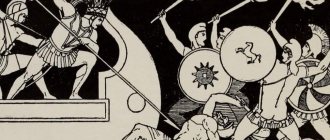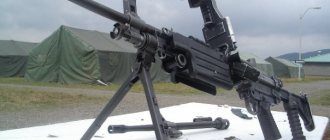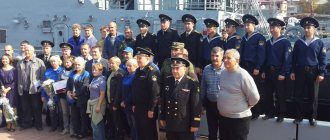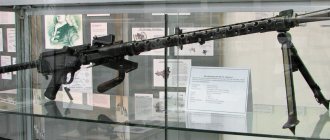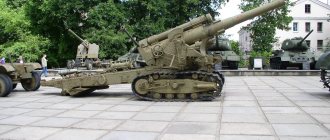29.04.2019
The Soviet torpedo boat "Komsomolets" is a small, high-speed military mine-artillery ship designed to carry out torpedo attacks on enemy ships in the coastal sea zone. Due to the design features and high tactical and technical parameters, ships of this type can be used for other purposes: conducting landing operations, conducting naval reconnaissance and laying minefields.
Background
Mine boat "Chesma" against the background of the carrier ship "Vel.
book Konstantin". The first reliable information about mine attacks dates back to the War of Independence of the American Colonies of 1776-1783. Mine-armed rowing ships were used by colonists in 1776 against the British battleship HMS Eagle.
|Eagle, as well as by the British in early 1803-1805 during the Napoleonic Wars in an attempt to destroy the invasion fleet.[2] In the first case, a mine designed by the American inventor Bushnell was towed and manually attached to the target ship. In the second, she set off with the current towards the target from a distance of 1-2 cables. Behind the second case of application are the inventions of another American - Robert Fulton, also known for building the first steamship.
The ancestors of the torpedo boats themselves as a family of ships are the Russian mine boats “Chesma” and “Sinop” under the command of S. O. Makarov (then a lieutenant), who first successfully used the Whitehead self-propelled mine on January 14, 1878 during the Russian-Turkish War against the Turkish steamer “Intibah” "[3]
Torpedo boat 76YA built by Yarrow, 1886
The first torpedo boats (then called mine boats) had a displacement of 5-16 tons, a speed of 12-18 knots, and were armed with 1-2 7-inch (180 mm) torpedoes. Artillery weapons were light (0.5-1.1 inches - 12.7-27.5 mm) or absent altogether.
The experience of combat use in the first wars of 1878-1905 revealed the advantages of the new class - greater striking power at modest costs. Disadvantages were also revealed - high vulnerability, a small supply of torpedoes, short range and practically non-existent seaworthiness, as well as the low characteristics of the torpedoes themselves. The desire to overcome the shortcomings led to the development of tactics for using destroyers: group attacks, at night or in conditions of limited visibility, near the coast or in confined waters (straits, bays, narrow places), salvo firing of torpedoes, then evading the enemy at maximum speed.
Nevertheless, the general assessment of the first generation of small carriers of torpedo weapons given by contemporaries can be expressed in the following words: “... did not meet the combat requirements either as a ship’s mine boat or as a destroyer for independent navigation.”
[4].
The same desire led to two divergent paths of class development:
- Increasing the size and displacement in order to equip ships with more powerful and long-range, and therefore heavier torpedoes, increase their number, strengthen artillery weapons, increase range and seaworthiness, and later - apply partial armor and structural protection.
- Rely on speed and maneuverability as the main combat characteristics and as the best defense against enemy opposition. At the same time, the ships were built small, as lightweight as possible, and of limited size.
The first path culminated in the birth of new classes of ships - destroyers and mine cruisers. In Russia, this path was reflected in the terms mine boat, destroyer, destroyer - all of them were applied to mine-torpedo warships. In turn, the destroyers were divided into destroyers and mine cruisers. In the West they were all called by the general term English. Torpedo Boat.
The second is the emergence of characteristic features of classic torpedo boats, which remained until they were replaced by missile boats: small displacement (up to 300 tons), a small number of torpedoes (2-4) in single-tube torpedo tubes with a caliber of up to 21″ (533 mm), high speed (30-50 knots), dynamic support principle, light auxiliary weapons (automatic with a caliber of 12.7-40 mm), lack of structural protection.
The creation, without any reservations, of effective carriers of the second type of torpedo weapon became possible only after the advent of light but powerful internal combustion engines, which led to the revival of the old idea of a “mine boat” in a new guise - in the form of a classic torpedo boat, different from its prototype - a steam mine boat boats - primarily with higher speed and more powerful weapons.[1]
Excerpt characterizing the torpedo boat
- Sempel will give, pag'ol will beat; Sempel will give, pag'ol will beat. He scattered fire, broke the pipe and threw it away. Denisov paused and suddenly looked cheerfully at Rostov with his sparkling black eyes. - If only there were women. Otherwise, there’s nothing to do here, just like drinking. At least I could fight with it. - Hey, who's there? - he turned to the door, hearing the stopped steps of thick boots with the clanking of spurs and a respectful cough. - Sergeant! - said Lavrushka. Denisov wrinkled his face even more. “Skveg’no,” he said, throwing away a wallet with several gold pieces. “G’ostov, count, my dear, how much is left there, and put the wallet under the pillow,” he said and went out to the sergeant. Rostov took the money and, mechanically, putting aside and arranging old and new gold pieces in piles, began to count them. - A! Telyanin! Zdogovo! They blew me up suddenly! – Denisov’s voice was heard from another room. - Who? At Bykov’s, at the rat’s?... I knew,” said another thin voice, and after that Lieutenant Telyanin, a small officer of the same squadron, entered the room. Rostov threw his wallet under the pillow and shook the small, damp hand extended to him. Telyanin was transferred from the guard for something before the campaign. He behaved very well in the regiment; but they did not like him, and in particular Rostov could neither overcome nor hide his causeless disgust for this officer. - Well, young cavalryman, how is my Grachik serving you? - he asked. (Grachik was a riding horse, a carriage, sold by Telyanin to Rostov.) The lieutenant never looked into the eyes of the person he was talking to; his eyes constantly darted from one object to another. “I saw you rode by today...” “Nothing, good horse,” answered Rostov, despite the fact that this horse, which he bought for 700 rubles, was not worth even half of that price. “She started falling on the left front...,” he added. - The hoof is cracked! It's nothing. I will teach you and show you which rivet to use. “Yes, please show me,” said Rostov. “I’ll show you, I’ll show you, it’s not a secret.” And you will be grateful for the horse. “So I’ll order the horse to be brought,” said Rostov, wanting to get rid of Telyanin, and went out to order the horse to be brought. In the entryway, Denisov, holding a pipe, huddled on the threshold, sat in front of the sergeant, who was reporting something. Seeing Rostov, Denisov winced and, pointing over his shoulder with his thumb into the room in which Telyanin was sitting, winced and shook with disgust. “Oh, I don’t like the fellow,” he said, not embarrassed by the sergeant’s presence. Rostov shrugged his shoulders, as if saying: “Me too, but what can I do!” and, having given orders, returned to Telyanin. Telyanin was still sitting in the same lazy position in which Rostov had left him, rubbing his small white hands. “There are such nasty faces,” Rostov thought as he entered the room. - Well, did they tell you to bring the horse? - Telyanin said, getting up and looking around casually. - I ordered it. - Let's go on our own. I just came in to ask Denisov about yesterday’s order. Got it, Denisov? - Not yet. Where are you going? “I want to teach a young man how to shoe a horse,” said Telyanin. They went out onto the porch and into the stables. The lieutenant showed how to make a rivet and went home. When Rostov returned, there was a bottle of vodka and sausage on the table. Denisov sat in front of the table and cracked his pen on paper. He looked gloomily into Rostov's face. “I’m writing to her,” he said. He leaned his elbows on the table with a pen in his hand, and, obviously delighted at the opportunity to quickly say in words everything he wanted to write, expressed his letter to Rostov. “You see, dg'ug,” he said. - We sleep until we love. We are children of God... but I fell in love - and you are God, you are pure, as on the day of creation... Who else is this? Drive him to Chog't. Once! - he shouted at Lavrushka, who, without any timidity, approached him. - Who should be? They ordered it themselves. The sergeant came for the money. Denisov frowned, wanted to shout something and fell silent. “It’s a big deal,” he said to himself. - How much money is left in the wallet? - he asked Rostov. – Seven new and three old. - Ah, skveg'no! Well, why are you standing there, stuffed animals, send the sergeant-major,” Denisov shouted at Lavrushka. “Please, Denisov, take the money from me, because I have it,” Rostov said, blushing. “I don’t like to borrow from my own people, I don’t like it,” Denisov grumbled. “And if you don’t take the money from me in a friendly manner, you’ll offend me.” “Really, I have it,” Rostov repeated. - No. And Denisov went to the bed to take out his wallet from under the pillow. - Where did you put it, Rostov? - Under the bottom pillow. - No, no. Denisov threw both pillows onto the floor. There was no wallet. - What a miracle! - Wait, didn’t you drop it? - said Rostov, lifting the pillows one by one and shaking them out. He threw off and shook off the blanket. There was no wallet. - Have I forgotten? No, I also thought that you were definitely putting a treasure under your head,” said Rostov. - I put my wallet here. Where is he? – he turned to Lavrushka. - I didn’t go in. Where they put it is where it should be. - No... - You just throw it somewhere and forget. Look in your pockets. “No, if only I hadn’t thought about the treasure,” said Rostov, “otherwise I remember what I put in.” Lavrushka rummaged through the entire bed, looked under it, under the table, rummaged through the entire room and stopped in the middle of the room. Denisov silently followed Lavrushka’s movements and, when Lavrushka threw up his hands in surprise, saying that he was nowhere, he looked back at Rostov. - G'ostov, you are not a schoolboy... Rostov felt Denisov's gaze on him, raised his eyes and at the same moment lowered them. All his blood, which was trapped somewhere below his throat, poured into his face and eyes. He couldn't catch his breath. “And there was no one in the room except the lieutenant and yourself.” Here somewhere,” said Lavrushka. “Well, you little doll, move around, look,” Denisov suddenly shouted, turning purple and rushing at the footman with a threatening gesture. - Make sure you have a wallet, otherwise I’ll burn it. I'll kill everyone! Rostov, looking around Denisov, began to button up his jacket, strapped on his saber and put on his cap. “I tell you to have a wallet,” Denisov shouted, shaking the orderly by the shoulders and pushing him against the wall. - Denisov, leave him alone; “I know who took it,” Rostov said, approaching the door and not raising his eyes. Denisov stopped, thought and, apparently understanding what Rostov was hinting at, grabbed his hand. – Gasp! - he shouted so that the veins, like ropes, swelled on his neck and forehead. “I’m telling you, you’re crazy, I won’t allow it.” The wallet is here; I'll take the shit out of this mega-dealer, and it will be here. “I know who took it,” Rostov repeated in a trembling voice and went to the door. “And I’m telling you, don’t you dare do this,” Denisov shouted, rushing to the cadet to hold him back. But Rostov snatched his hand away and with such malice, as if Denisov were his greatest enemy, directly and firmly fixed his eyes on him. - Do you understand what you are saying? - he said in a trembling voice, - there was no one in the room except me. Therefore, if not this, then... He could not finish and ran out of the room. “Oh, what’s wrong with you and with everyone,” were the last words that Rostov heard. Rostov came to Telyanin’s apartment. “The master is not at home, they have left for headquarters,” Telyanin’s orderly told him. - Or what happened? - added the orderly, surprised at the upset face of the cadet. - There is nothing. “We missed it a little,” said the orderly. The headquarters was located three miles from Salzenek. Rostov, without going home, took a horse and rode to headquarters. In the village occupied by the headquarters there was a tavern frequented by officers. Rostov arrived at the tavern; at the porch he saw Telyanin's horse. In the second room of the tavern the lieutenant was sitting with a plate of sausages and a bottle of wine. “Oh, and you’ve stopped by, young man,” he said, smiling and raising his eyebrows high. “Yes,” said Rostov, as if it took a lot of effort to pronounce this word, and sat down at the next table. Both were silent; There were two Germans and one Russian officer sitting in the room. Everyone was silent, and the sounds of knives on plates and the lieutenant’s slurping could be heard. When Telyanin finished breakfast, he took a double wallet out of his pocket, pulled apart the rings with his small white fingers curved upward, took out a gold one and, raising his eyebrows, gave the money to the servant. “Please hurry,” he said. The gold one was new. Rostov stood up and approached Telyanin. “Let me see your wallet,” he said in a quiet, barely audible voice. With darting eyes, but still raised eyebrows, Telyanin handed over the wallet. “Yes, a nice wallet... Yes... yes...” he said and suddenly turned pale. “Look, young man,” he added. Rostov took the wallet in his hands and looked at it, and at the money that was in it, and at Telyanin. The lieutenant looked around, as was his habit, and suddenly seemed to become very cheerful. “If we’re in Vienna, I’ll leave everything there, but now there’s nowhere to put it in these crappy little towns,” he said. - Well, come on, young man, I’ll go. Rostov was silent. - What about you? Should I have breakfast too? “They feed me decently,” Telyanin continued. - Come on. He reached out and grabbed the wallet. Rostov released him. Telyanin took the wallet and began to put it in the pocket of his leggings, and his eyebrows rose casually, and his mouth opened slightly, as if he was saying: “yes, yes, I’m putting my wallet in my pocket, and it’s very simple, and no one cares about it.” . - Well, what, young man? - he said, sighing and looking into Rostov’s eyes from under raised eyebrows. Some kind of light from the eyes, with the speed of an electric spark, ran from Telyanin’s eyes to Rostov’s eyes and back, back and back, all in an instant. “Come here,” Rostov said, grabbing Telyanin by the hand. He almost dragged him to the window. “This is Denisov’s money, you took it...” he whispered in his ear. – What?... What?... How dare you? What?...” said Telyanin. But these words sounded like a plaintive, desperate cry and a plea for forgiveness. As soon as Rostov heard this sound of the voice, a huge stone of doubt fell from his soul. He felt joy and at the same moment he felt sorry for the unfortunate man standing in front of him; but it was necessary to complete the work begun. “People here, God knows what they might think,” Telyanin muttered, grabbing his cap and heading into a small empty room, “we need to explain ourselves...” “I know this, and I will prove it,” said Rostov. “I... Telyanin’s frightened, pale face began to tremble with all its muscles; the eyes were still running, but somewhere below, not rising to Rostov’s face, sobs were heard. “Count!... don’t ruin the young man... this poor money, take it...” He threw it on the table. - My father is an old man, my mother!... Rostov took the money, avoiding Telyanin’s gaze, and, without saying a word, left the room. But he stopped at the door and turned back. “My God,” he said with tears in his eyes, “how could you do this?” “Count,” said Telyanin, approaching the cadet. “Don’t touch me,” Rostov said, pulling away. - If you need it, take this money. “He threw his wallet at him and ran out of the tavern. In the evening of the same day, there was a lively conversation between the squadron officers at Denisov’s apartment. “And I’m telling you, Rostov, that you need to apologize to the regimental commander,” said a tall staff captain with graying hair, a huge mustache and large features of a wrinkled face, turning to the crimson, excited Rostov. Staff captain Kirsten was demoted to soldier twice for matters of honor and served twice. – I won’t allow anyone to tell me that I’m lying! - Rostov screamed. “He told me I was lying, and I told him he was lying.” It will remain so. He can assign me to duty every day and put me under arrest, but no one will force me to apologize, because if he, as a regimental commander, considers himself unworthy of giving me satisfaction, then... - Just wait, father; “Listen to me,” the captain interrupted the headquarters in his bass voice, calmly smoothing his long mustache. - You tell the regimental commander in front of other officers that the officer stole... - It’s not my fault that the conversation started in front of other officers. Maybe I shouldn’t have spoken in front of them, but I’m not a diplomat. Then I joined the hussars, I thought that there was no need for subtleties, but he tells me that I’m lying... so let him give me satisfaction... - That’s all good, no one thinks that you’re a coward, but that’s not the point. Ask Denisov, does this look like something for a cadet to demand satisfaction from the regimental commander? Denisov, biting his mustache, listened to the conversation with a gloomy look, apparently not wanting to engage in it. When asked by the captain's staff, he shook his head negatively. “You tell the regimental commander about this dirty trick in front of the officers,” the captain continued. - Bogdanych (the regimental commander was called Bogdanych) besieged you. - He didn’t besiege him, but said that I was telling a lie. - Well, yes, and you said something stupid to him, and you need to apologize. - Never! - Rostov shouted. “I didn’t think this from you,” the captain said seriously and sternly. “You don’t want to apologize, but you, father, not only before him, but before the entire regiment, before all of us, you are completely to blame.” Here's how: if only you had thought and consulted on how to deal with this matter, otherwise you would have drunk right in front of the officers. What should the regimental commander do now? Should the officer be put on trial and the entire regiment be soiled? Because of one scoundrel, the whole regiment is disgraced? So, what do you think? But in our opinion, not so. And Bogdanich is great, he told you that you are telling lies. It’s unpleasant, but what can you do, father, they attacked you yourself. And now, as they want to hush up the matter, because of some kind of fanaticism you don’t want to apologize, but want to tell everything. You are offended that you are on duty, but why should you apologize to an old and honest officer! No matter what Bogdanich is, he’s still an honest and brave old colonel, it’s such a shame for you; Is it okay for you to dirty the regiment? – The captain’s voice began to tremble. - You, father, have been in the regiment for a week; today here, tomorrow transferred to adjutants somewhere; you don’t care what they say: “there are thieves among the Pavlograd officers!” But we care. So, what, Denisov? Not all the same? Denisov remained silent and did not move, occasionally glancing at Rostov with his shiny black eyes. “You value your own fanabery, you don’t want to apologize,” the headquarters captain continued, “but for us old men, how we grew up, and even if we die, God willing, we will be brought into the regiment, so the honor of the regiment is dear to us, and Bogdanich knows this.” Oh, what a road, father! And this is not good, not good! Be offended or not, I will always tell the truth. Not good! And the headquarters captain stood up and turned away from Rostov. - Pg'avda, why don't you take it! - Denisov shouted, jumping up. - Well, G'ostov! Well! Rostov, blushing and turning pale, looked first at one officer, then at the other. - No, gentlemen, no... don’t think... I really understand, you’re wrong to think about me like that... I... for me... I’m for the honor of the regiment. So what? I will show this in practice, and for me the honor of the banner... well, it’s all the same, really, it’s my fault!.. - Tears stood in his eyes. “I’m guilty, I’m guilty all around!... Well, what else do you need?...” “That’s it, Count,” the captain, turning, shouted, hitting him on the shoulder with his big hand. “I’m telling you,” Denisov shouted, “he’s a nice little guy.”
Story
World War I
The first successful combat use of classic torpedo boats took place during the First World War on April 7, 1917. These were English boats (English Thornycroft). In the literature they are referred to as a "40-foot boat" (eng. 40-ft Coastal Motor Boat; 40-ft CMB).[5] Four SMV
in the Ostend area they attacked a detachment of German destroyers and sank one of them.
They and the next type “55-foot boats” (eng. 55-ft CMB) were used on June 17, 1919 against the Baltic Fleet of Soviet Russia. In the Great Kronstadt roadstead, the anchored cruiser "Oleg" was sunk.[6] Then, on August 18, the old cruiser “Memory of Azov” (during World War I, used as a mother ship for submarines) was sunk in Srednyaya Harbor, and the battleship “Andrei Pervozvanny” was damaged.[7][8] Of the seven attackers, three boats were sunk[8][9][10] by fire from the destroyer Gabriel.[11] The British Admiralty reported: during a raid by British torpedo boats on August 18, 1919, the battleships Petropavlovsk, Andrei Pervozvanny and the destroyer were sunk, the cruiser was damaged[12], “the strongest naval fortress in the world was defeated by a small number of well-disciplined and fearless British”[ 12][13] British officers were captured.[10][14] One of the captured English officers said: “The British will be very surprised to learn about such large losses in boats during the Kronstadt operation. The action of Russian artillery is brilliant." "Gabriel" at that time set a record for the number of torpedo boats destroyed by artillery fire in one battle (3 out of 7).[8] On September 15, Petropavlovsk was listed among the active ships of the bunker (the active detachment of ships of the Baltic Sea). (It is impossible to repair serious damage in such a short period of time.)[10][14][15]
The Second World War
By the beginning of the war, the idea of large artillery ships as the basis of the fleet still prevailed. Torpedo boats were poorly represented in the main fleets of Western naval powers. With the beginning of the war, the construction of boats increased sharply (see table).
| A country | In service 1939 | In service 1945 | Losses |
| Great Britain | 18 | 91 | — |
| Germany [16] | 17 | 117 | 112 |
| USA [17] | — | 511 | 65 |
| Japan | ? | 189 | 49 |
Until 1938, the USSR adhered to the strategy of developing light forces, including boats, mainly due to limited capabilities for the construction of large ships. By the beginning of the war, the USSR had 269 torpedo boats.[18] Over the course of the war, more than 30 torpedo boats were built,[19] and 166 received from the Allies.[20]
Typical wartime torpedo boats
British torpedo boat MTB 5.
England
: torpedo boats were designated MTB (English: Motor Torpedo Boat). MTB (English Vosper) had a speed of 37 knots, two 533-mm single-tube torpedo tubes, 2-3 machine guns with a caliber of 7.62 - 12.7 mm, and up to 4 depth charges.
German torpedo boat type S-100.
Germany
: torpedo boats were called German.
Schnellboot ( S-Boot
). (The allies designated them E-boat). The S-26 type had the following characteristics: displacement 115 tons, length 34.95 m, speed up to 40 knots, armament: two 533 mm torpedo tubes (with two spare torpedoes) and two 20 mm anti-aircraft guns[21].
Italian torpedo boat MAS in deforming camouflage on the Mediterranean Sea
Italy
: torpedo boats were designated MAS (Italian: Motoscafo armato silurante). MAS-501 (Italian: Baglietto) had a speed of 44 knots, two 450 mm torpedo tubes, a 13.2 mm machine gun and 6 depth charges.
USSR
: the torpedo boat of the G-5 project had a displacement of 17 tons, a length of 20 m, a speed of over 50 knots, and was armed with two 533 mm torpedoes (in torpedo chutes) and two 7.62 mm or 12.7 mm machine guns.
American torpedo boats type PT 103.
USA
: torpedo boats were designated PT (English: Patrol Torpedo boat). The PT 103 type boat had a displacement of 50 tons, a length of 24 m, a speed of up to 45 knots, four 533 mm single-tube torpedo tubes, 12.7 mm machine guns and a 40 mm anti-aircraft gun [22].
An American torpedo boat delivers those rescued from the cruiser Northampton to shore after the battle at Tassafaronga
Japan
The Mitsubishi
torpedo boat had a displacement of 15 tons, a length of 15 m, a width of 3.65 m, an average depth of 0.62 m. One type 91 gasoline engine with a power of 920 hp. s., speed 33 knots. Armament: one 25 mm cannon or 13.2 mm machine gun, two 457 mm torpedoes, two bomb throwers or bomb releasers. A total of 52 units were built (side numbers 538-555, 839-848, 871-894), of which 7 were killed in battle.[23].
The tactics of using torpedo boats remained the same, and were supplemented only by interaction with other forces - primarily aviation and surface ships, to increase combat stability. However, when the situation forced it, the boats acted independently, as for example, in the struggle between the USA and Japan for the Solomon Islands. In addition to the main task, the boats were at times assigned additional tasks: reconnaissance and patrol, landing and evacuation of reconnaissance and sabotage groups, guarding coastal convoys, mine laying, and fighting submarines in coastal waters.
Post-war stage
Swedish torpedo boat Swede.
Norrtälje With the advent of missile weapons, most countries stopped building torpedo boats in favor of missile boats. The few remaining - including the USSR, Germany, Norway, Sweden, China, Israel - continued to build torpedo boats along with missile boats.
Instead of attacking large ships, the main purpose of the boats now became: patrol service, fighting enemy light forces and submarines. Some types do not carry anti-ship torpedoes, but only anti-submarine ones. The transfer of aging boats to the fleets of “small” maritime powers has also become typical. For example, German boats went over to Turkey.
Project 206 torpedo boat, Egyptian Navy (torpedo tubes removed)
The post-war Soviet torpedo boat (project 206) has a displacement of 268 tons, a length of 38.6 m, a speed of 42 knots, four 533-mm single-tube torpedo tubes (torpedoes “53-56”), 2 twin automatic gun mounts AK-230 (30 mm ).
Boats with combined missile and torpedo armament also appeared: Dabur type (Israel), Hegu type (China), Hauk type (Norway), Albatross type (Germany), Nordköping type (Sweden) and "Intrepida" (Argentina, lead boat of the type).
By 2000, the world's fleets included 162 boats with combined missile-torpedo armament and 47 torpedo boats: Bangladesh - 1, Burma - 10, Egypt - 8, Israel - 17, Russia - 5 (not counting the naval unit of the border troops [24]) , North Korea - 6[25].
The general trend towards the disappearance of torpedo boats from fleets in the 21st century continues.
Links
Boat classes by task Rocket | Torpedo | Missile and torpedo | Armored boats | Artillery | Artillery-torpedo | Exploding (torpedo boats) | Air defense | Anti-submarine | Sentinels | Patrolmen | Minelayers | Anti-mine (minesweepers) | Airborne | Smoke curtains | Remote controlled boat control General list of boat weapons Anti-ship missile ·
Anti-submarine missile (Missile Torpedo)
(only for anti-submarine boats) ·
Anti-aircraft guided missile
·
Pole mine
·
Towed mine
·
mine
·
Anti-ship torpedo
·
Anti-submarine torpedo
·
Universal torpedo
·
Explosive charge
·
Bottom mine
·
Anchor mine
·
Depth charge ( bomb releaser, bomb launcher)
·
Anti-submarine grenade (Anti-submarine grenade launcher)
· Artillery gun · Recoilless rifle · Mortar · Gas launcher (only for landing support boats) ·
Unguided rocket (Single missile launcher, Multiple launch rocket system)
· Automatic grenade launcher · Mitrailleuse · Machine gun · Flamethrower (patrol boats only)
Mine sweeper
Remotely
controlled minesweeper boats
(utility boats only)
Notes
- ↑ 12
Kuzmin A. Notes on the history of torpedo boats. - M-L.: Voenmorizdat NKVMF USSR, 1939. - 136 p. Chapter V. Torpedo boats in the imperialist war of 1914-1918. - The Trafalgar Campaign: 1803-1805. Robert Gardiner, ed. Chatham Publishing, 1997, pp. 82-84.
- Kuzmin A.
Notes on the history of torpedo boats. - M-L.: Voenmorizdat NKVMF USSR, 1939, p. 17-20. cited from: [1] - The statement of Admiral K.P. Pilkin regarding the Torneycroft destroyer, typical of its time, is cited from: N.N. Afonin, V.V. Yarovaya, Minorboats of the Russian Fleet.
- British Motor Torpedo Boats 1939-45. Osprey, 2002-…
- The cruiser "Oleg" was sunk at the Tolbukhin lighthouse by the English SMV-4, see: Armored cruiser "Oleg" - BG-Knowledge. RU
- Jane's War at Sea: 1897—1997. By Bernard Ireland and Eric Grove, Harper Collins, 1997, p. 123.
- ↑ 1 2 3 Kuzmin A.
Notes on the history of torpedo boats. - M-L.: Voenmorizdat NKVMF USSR, 1939 / P. 59 - Twice Red Banner Baltic Fleet. 3rd edition corrected and expanded. - M.: Military Publishing House. 1990. pp. 142—143 ISBN 5-203-00245-2
- ↑ 123
“An attack completely unexpected in its idea” on the website terijoki.spb.ru (based on materials from the magazine “Gangut” No. 26/2001 P. 98-113 - Other sources provide the following data: A.S. Pukhov indicates 6 boats ( Pukhov A.S.
Baltic Fleet in the Defense of Petrograd. (1919). M. 1957. P. 119), but this is a clear exaggeration.
Midshipman A. Gefter, who collaborated with the British, indicates 7 sunk “engines” out of the 11 allegedly participating in the operation. He writes that the other three - damaged - were sunk by the British themselves. ( Gefter A.
Memoirs of a courier // Archive of the Russian Revolution. Berlin 1923. T. 10. - Reprint: M.: Terra: Politizdat, 1991 (“Russian Archive”). P. 114-168 ISBN 5-250-02083-6 vol. 9-10 - ↑ 1 2 Agar F
. Baltic Episode. A Classic of Secret Service in Russia Waters. London, 1961 P. 152, 178 - Bennet S.
Cowan's war: The Story of British Naval Operations in the Baltic, 1918–1929. London, 1964. P. 157 - ↑ 1 2 Gefter A.
Memoirs of a courier // Archive of the Russian Revolution. Berlin 1923. T. 10. - Reprint: M.: Terra: Politizdat, 1991 (“Russian Archive”). pp. 114—168 ISBN 5-250-02083-6 (vol. 9—10) - War Minister W. Churchill, a consistent supporter of active opposition to Bolshevism, was extremely disapproving of the raid on Kronstadt. Assessing the results of this operation, he pointed out to Lloyd George that this raid had caused irreparable losses. ( Gilbert M.
Winston S. Churchill. Vol. IV. 1916-1922. Boston, 1978. P. 871 cited from: “New Sentinel” No. 4. 1996. pp. 88-90.). In general, in the aforementioned battles in the Baltic, the British lost: one light cruiser, 2 destroyers, a submarine, 2 minesweepers and the aforementioned torpedo boats. - “New Sentinel” No. 4. 1996. P. 88-90 - "SCHNELLBOTS" German torpedo boats of World War II
- uboat.net – Allied Warships – Allied War Losses
- 3.5 Soviet torpedo boats
- sovnavy-ww2.by.ru/mtb/
- uboat.net – Motor torpedo boats: Allied Warships of WWII
- Jane's War at Sea…
- Sea Warfare. Chris Bishop, ed. Orbis publishing Ltd., 1999, pp. 18-29.
- "Modelist-Constructor" 1988, No. 1
- Jane's Warship Recognition Guide. 2nd ed., Harper Collins, 1999.
Mistakes made by engineer Tupolev
The torpedo boats (Tupolev's project) were based on a seaplane float. Its top, which influenced the strength of the device, was used by the designer on the boat. The upper deck of the ship was replaced by a convex and steeply curved surface. It was impossible for a person, even when the boat was at rest, to stay on the deck. When the ship was moving, it was completely impossible for the crew to leave the cabin; everything that was on it was thrown off the surface. In wartime, when it was necessary to transport troops on the G-5, military personnel were seated in the chutes that are available at the torpedo tubes. Despite the good buoyancy of the vessel, it is impossible to transport any cargo on it, since there is no space to place it. The design of the torpedo tube, which was borrowed from the British, was unsuccessful. The lowest speed of the ship at which torpedoes were fired was 17 knots. At rest and at a lower speed, a salvo of torpedoes was impossible, since it would hit the boat.
